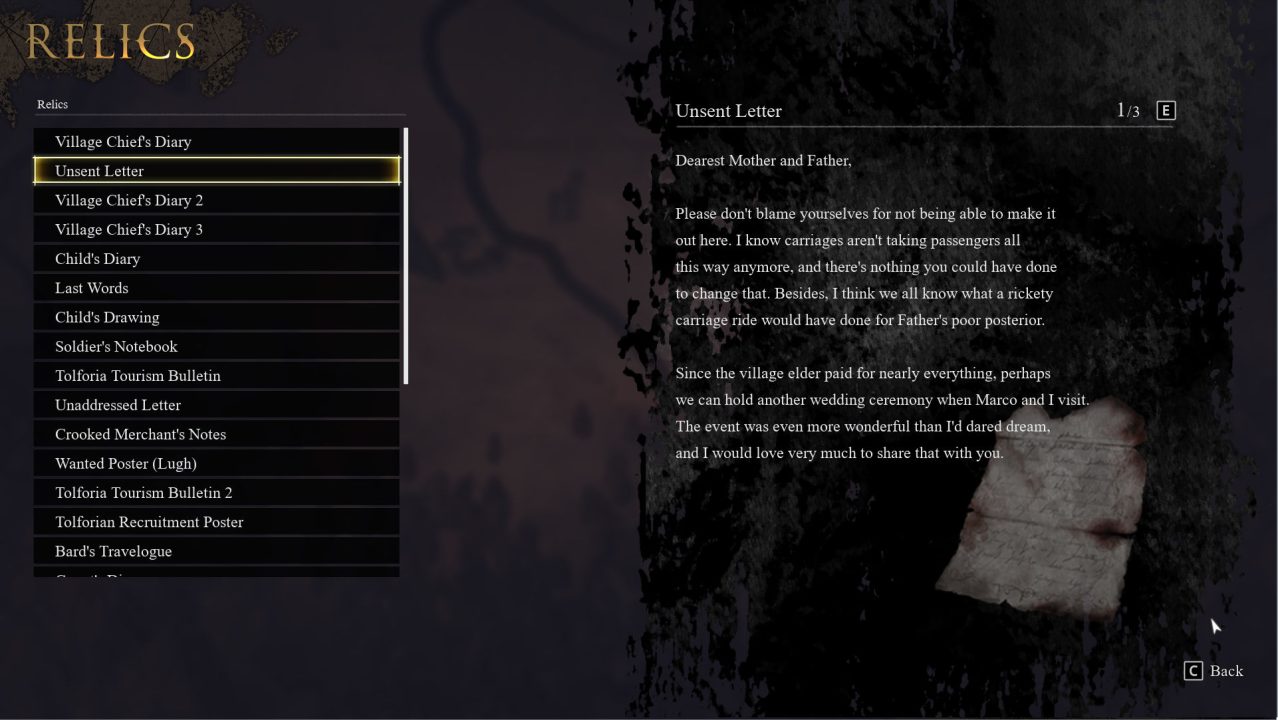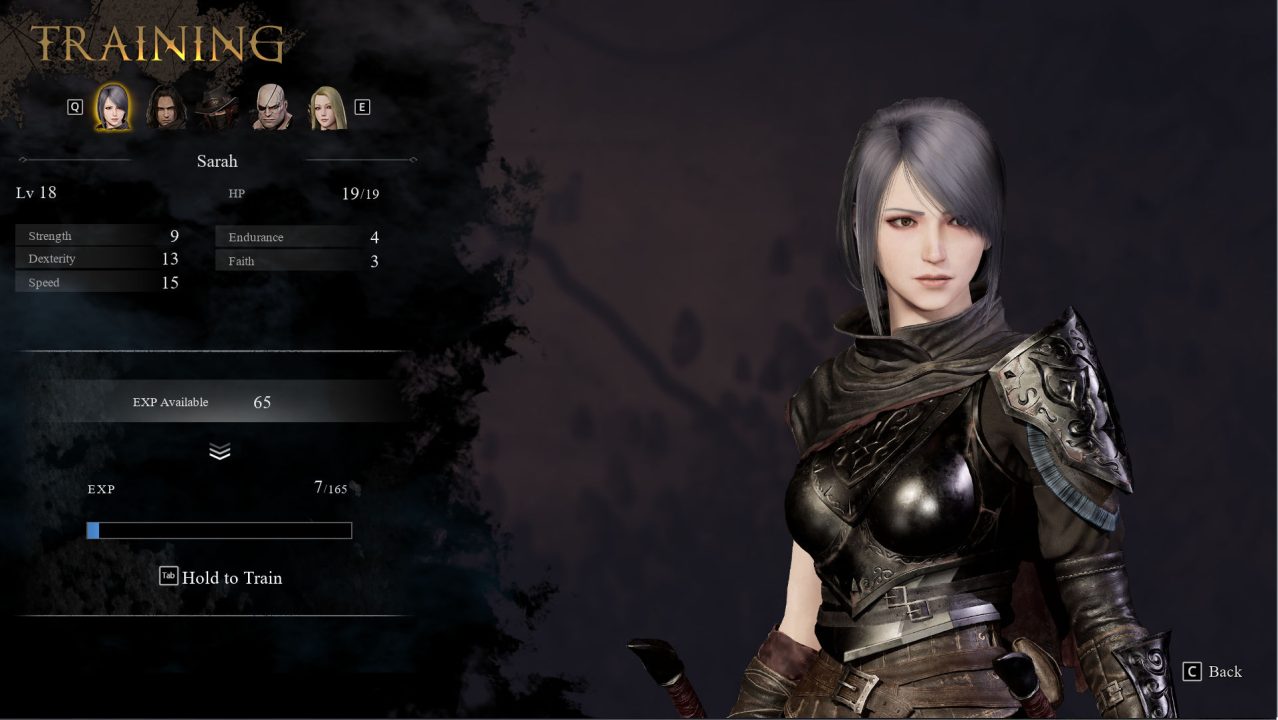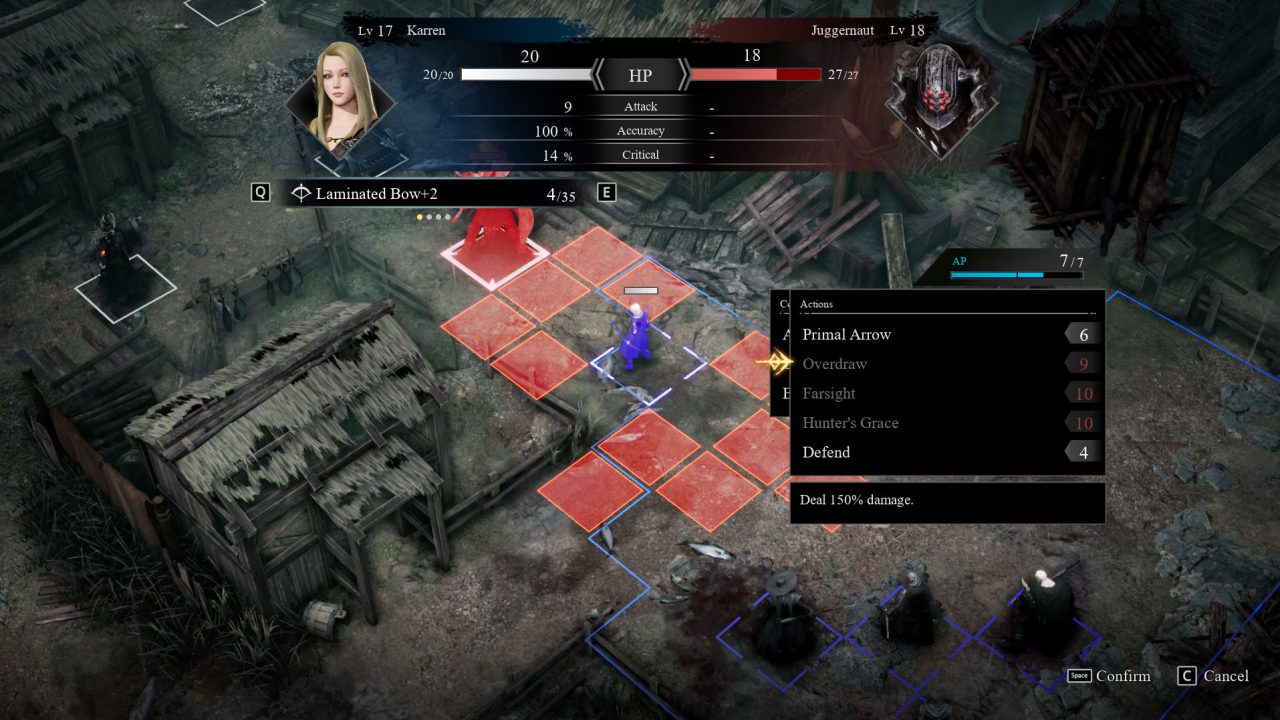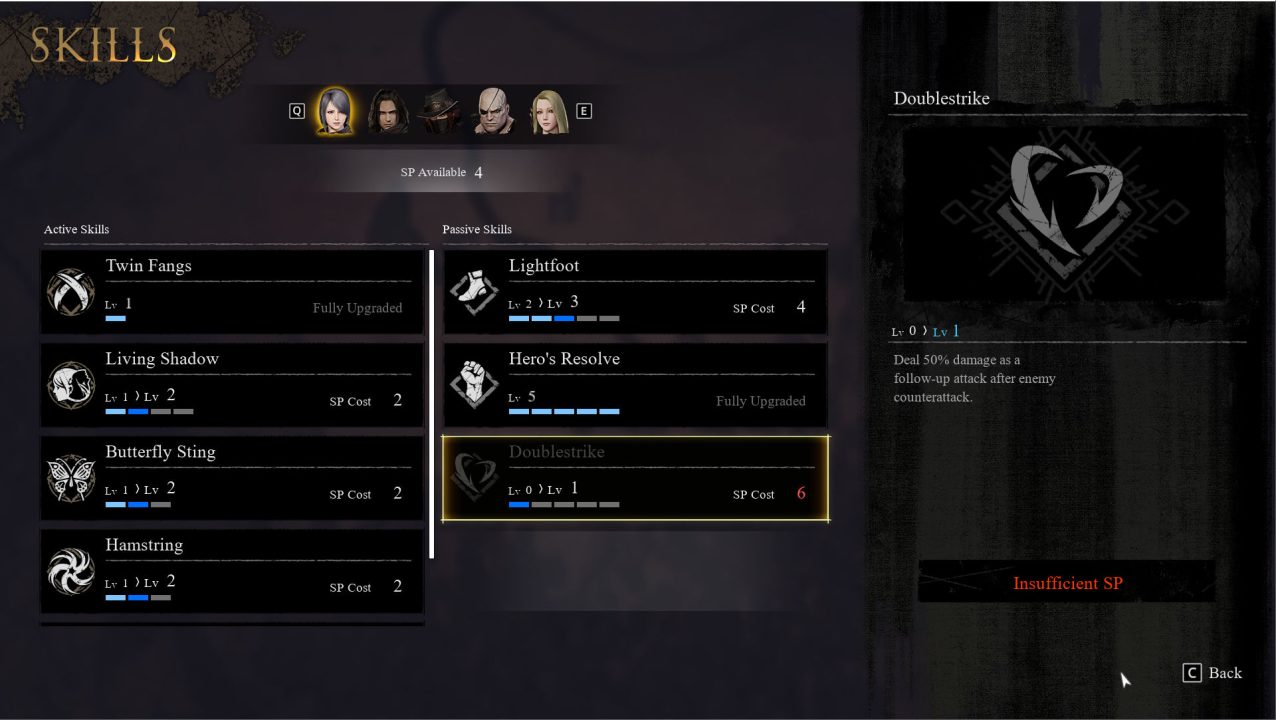Redemption Reapers piqued my interest as a tactics RPG with a darker tone, and I was even more excited to see that the game shared staff with Fire Emblem: Path of Radiance, a favorite tactics RPG of mine. Unfortunately, Redemption Reapers didn’t live up to my high hopes.
If I had to describe Redemption Reapers in a word, it would be generic. The game has a cast of five main characters, so you would think there would be more than enough time to characterize each of them, but for the bulk of the game, these characters are little more than their archetypes. We have an edgy spearman who talks about how much he likes killing every chapter, a disgraced knight who acts as the party’s leader, a soft-spoken hulk of a man, a sarcastic archer, and our main character, a dagger-wielding woman who has the most development throughout the story.
While the cast is small and intimate, there’s little chemistry here. I enjoyed the relationship between the main character, Sarah, and Glenn, the disgraced knight. Beyond that, though, the party is constantly bickering, but not in an entertaining or endearing way. This works well with the game’s dark tone. The characters are dour and suffering, so it makes sense for them to come off that way. However, Redemption Reapers‘ story isn’t particularly deep, and the characters were difficult for me to connect with, so it feels dark and gloomy for the sake of it most of the time.

The plot of Redemption Reapers follows our small troop as they fight The Mort, which are somewhat intelligent monsters that have ravaged the land, destroyed towns, and killed anyone in their path. Our group is part of an organization called the Ashen Hawk Brigade, one of the few forces left trying to stave off The Mort and take care of refugees. Unfortunately, the story leaves a lot of gaps regarding the origin of The Mort, each character’s backstory, and the history of each location you battle in. Some gaps are left to be filled by the player’s imagination, while others are expanded on in text logs you can acquire during combat and then read between battles.
Some of the text logs are interesting, but there are a lot of them, and it’s a bit of a crapshoot whether you get a good one that expands on the world or a dull one that doesn’t add much to the game. Sometimes you need to read these missable text logs to experience the story fully, which isn’t ideal. The structure wants to leave much of the story for the players to think and theorize about but doesn’t provide enough interesting hooks for me to latch onto.
To the game’s credit, the developers nailed the aesthetic. The Mort look like scary monsters, and while I only saw a few types of them in the early game, the mid-game brings a variety of foes with distinct, neat visuals. The dim lighting and destroyed locales add to the doom and gloom of the setting and make you feel like you’re fighting during the end of the world. These visuals pair well with the game’s best feature, the soundtrack, which was composed by Rei Kondoh (Ōkami, Fire Emblem: Three Houses, and more). The dark, often mellow tones match the grim story and appropriately become more intense during combat. Seeing what song I would get to listen to on each map was a highlight of my playthrough. [Editor’s Note: A soundtrack has inexplicably not been released yet.]
Redemption Reapers’ cutscenes also look nice, and while the character’s personalities may be a little lacking, their designs are not. One benefit of sticking to a small cast of characters is that each character looks unique, and their designs do a good job of capturing the essence of the characters. Cutscenes feature the game’s voice acting, which is mostly good but occasionally includes some flat delivery.

Of course, Redemption Reapers is more than just its story. You’ll spend most of your time in the game guiding your troops through grid-based encounters with The Mort. The combat system will feel familiar to fans of the genre but with some unique wrinkles—first, the game’s action point (AP) system. AP is used to attack, defend, and use skills, and each character gains AP at the start of their turn. As long as you have enough AP, you can take multiple actions a turn, allowing you to attack and defend on the same turn. Skills cost varying amounts of AP, with more powerful ones costing more. This requires you to decide whether to take one big action on a turn or multiple small ones.
Redemption Reapers also allows you to move between actions if you have enough movement left. For example, if a character can move five spaces in total, they can move three spaces, attack, move two more, and then defend. This movement makes it very easy to reposition units so they are always right where you want them.
Positioning is key because it lets you take advantage of Redemption Reapers’ follow-up attack system. Anytime you attack an enemy, any allies in range can follow up with an attack of their own. Follow-up attacks allow you to take out enemies while spending minimal AP and avoiding counterattacks. Positioning well for these follow-up attacks is essential in the early game because enemies are powerful, and you can only take a couple of hits on anyone but your tankiest character.
Each character has a specific combat role, an excellent advantage of using the smaller cast. For example, your spearman can hit multiple enemies simultaneously and from a longer range, making him great for follow-up attacks. On the other hand, your dagger user can often attack multiple times in a turn, making it possible to trigger many follow-up attacks. The characters functioning very differently helps teach you how to play. For example, you should be tanking with the unit that has skills that increase its durability. Using that character teaches you the value of tanking without needing a tutorial.

Units can also be customized between battles to an extent. As you level up units, they earn skill points that you can use to buy new skills or enhance existing ones. This is most interesting in the early game when you don’t have any skills, so choosing which ones you want to start with feels meaningful and can heavily impact how you play the early maps of the game.
Additionally, Redemption Reapers includes a bonus experience system. If you perform well on a map by finishing it quickly or with all of your units surviving, the game rewards you with bonus experience you can spend between maps. These bonuses are a great way to catch a unit up if they fall behind in experience, which can happen if a unit falls in battle.
Redemption Reapers does not feature permadeath. Instead, when a character’s health reaches 0, they retreat and aren’t usable until the next battle. You don’t have that many units, so losing one early is often cause for a reset, but if you lose one later in a map, you can often finish with what soldiers you have left. Given the game’s dark tone, the lack of consequences for unit death feels a little strange. Permadeath wouldn’t have worked with this small of a cast, but something like an injury system for units that fall in battle might have made a unit falling feel more weighty than it does.

The combat system is interesting, especially once you get into the mid-game. Early game maps tend to be straightforward affairs where you bait enemies with your tank and then surround and pound them with the rest of your troops. In the mid-game, Redemption Reapers introduces side objectives like protecting citizens and more enemy types that encourage you to play faster. The game also includes maps that spawn some of your units separate from the rest of the group. These maps force you to play differently and are the most interesting parts of the game.
Overall, Redemption Reapers has a sound combat system that isn’t strategically interesting in the early game and a story that never grabbed me. Things start to pick up by the mid-game, but many players won’t be willing to give the game time to redeem itself.


